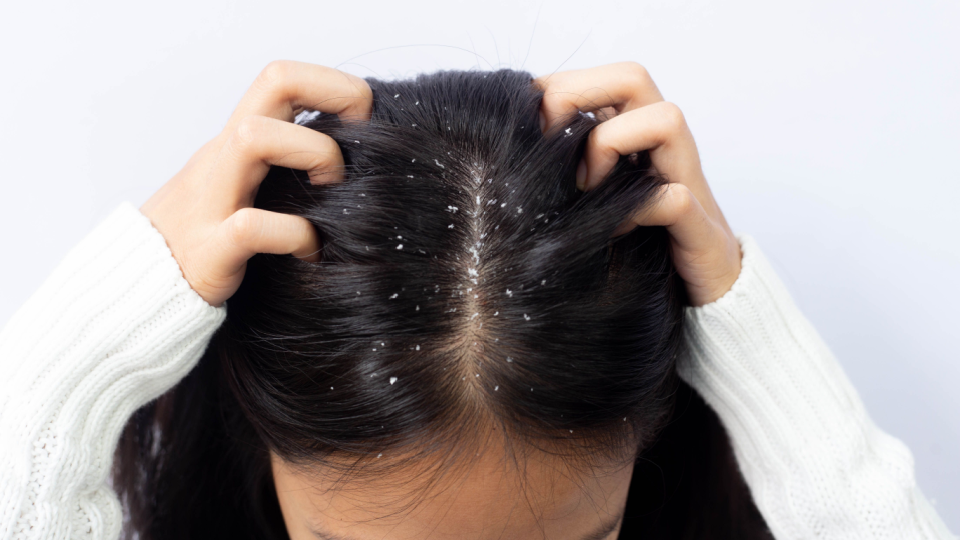Seborrheic dermatitis is triggered by an overgrowth of a harmless yeast called Malassezia that lives on the skin. Seborrheic dermatitis is not usually linked to any underlying illness, but it can be stubborn and severe in people with HIV infection and it is also common in people with Parkinson’s disease. Tiredness and stress can sometimes trigger a flare of seborrheic dermatitis. It is more common in cold than in warm weather, and it is not related to diet.
Signs and symptoms:
- Itchy white flakes of skin on your scalp (dandruff). When scratched, the flakes come loose, mix in with your hair, or fall onto your neck and shoulders.
- Red scales on your skin.
- Crusty yellow scales on infants’ heads (cradle cap). Cradle cap shouldn’t itch, but scratching may cause additional inflammation in the area and break the skin, leading to bleeding or mild infections.
- Blepharitis (scaly redness on the edges of your eyelids).
- Pinkish plaques (thick skin) of scales on both sides of your face.
- Flaky patches on your chest and at your hairline that are shaped like a flower petal or a ring.
When to see a doctor?
It's usually not necessary to see a doctor for mild seborrheic dermatitis, but severe or persistent symptoms are worth getting checked out. If the rash is persistent and doesn't improve with treatment, it may be a different condition. See your doctor if:
- You're so uncomfortable that you're losing sleep or being distracted from your daily routines
- Your condition is causing embarrassment and anxiety
- You suspect your skin is infected
- You've tried self-care steps without success

